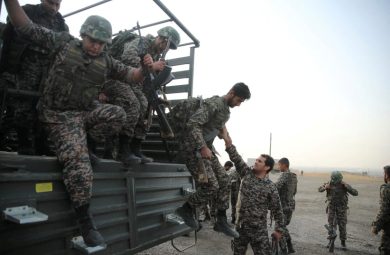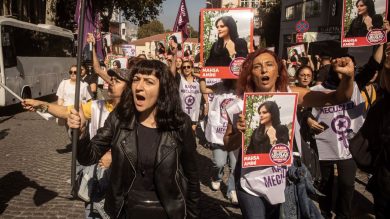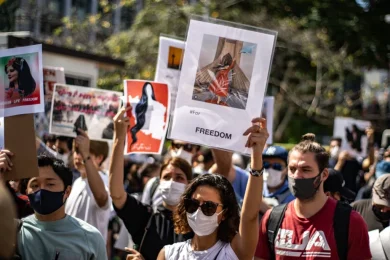The Islamic Revolutionary Guard Corps (IRGC), particularly its elite Quds Force, has meticulously cultivated a network of proxy groups across the Middle East to advance Iran’s strategic interests. Among these, Hezbollah in Lebanon, Hamas in the Palestinian territories, and the Houthis in Yemen stand out as pivotal players. This report delves into the mechanisms of Iran’s support for these groups, their operational dynamics, and the broader implications for regional stability.
1. The IRGC’s Strategic Framework
The IRGC’s Quds Force orchestrates Iran’s extraterritorial operations, focusing on building alliances with non-state actors to project power and counter adversaries. This strategy offers Iran plausible deniability while exerting influence beyond its borders. By supporting groups with aligned interests, Iran extends its reach without direct military engagement.
2. Hezbollah: Iran’s Foremost Proxy
Origins and Evolution
Hezbollah emerged in the early 1980s amidst the Lebanese Civil War, inspired by Iran’s Islamic Revolution. Iranian Revolutionary Guards played a crucial role in its formation, providing training, funding, and ideological guidance. Over time, Hezbollah transformed into a formidable political and military entity in Lebanon.
Operational Capabilities
Hezbollah boasts a sophisticated arsenal, including precision-guided missiles and drones, largely supplied by Iran. The group has engaged in various conflicts, notably the 2006 war with Israel, and has supported the Assad regime in Syria. Its extensive network includes units like Unit 3800, responsible for training Shiite militias in Iraq and Yemen.
Financial and Logistical Support
Iran provides Hezbollah with substantial financial aid, estimated at over $700 million annually. This funding supports military operations, social services, and media outlets like Al-Manar TV. Logistical support includes arms transfers facilitated by IRGC units such as Unit 190 and Unit 700.
3. Hamas: A Complex Alliance
Relationship with Iran
Despite ideological differences—Hamas being Sunni and Iran predominantly Shia—the two share common goals, particularly opposition to Israel. Iran has historically provided Hamas with financial aid, weapons, and training. However, the relationship has experienced fluctuations due to geopolitical shifts, such as differing stances on the Syrian conflict.
Military Enhancements
Iran’s support has enabled Hamas to develop an extensive rocket arsenal and tunnel networks. The group’s military wing, the Izz ad-Din al-Qassam Brigades, has received training and resources to enhance its operational capabilities, posing a significant threat to Israeli security.
4. The Houthis: Expanding Iran’s Reach
Emergence and Ideology
The Houthis, officially known as Ansar Allah, are a Zaidi Shia movement originating from northern Yemen. While initially a local insurgency, the group has grown into a significant force, controlling large swaths of Yemen and engaging in regional conflicts.
Iranian Support
Iran’s backing of the Houthis includes the provision of weapons, training, and financial assistance. The IRGC has facilitated arms transfers, including missiles and drones, enhancing the Houthis’ ability to strike targets in Saudi Arabia and beyond. Reports indicate that IRGC commanders, such as Brigadier General Abdolreza Shahlai, have been directly involved in overseeing Houthi operations.
Strategic Implications
The Houthis’ control over parts of Yemen allows Iran to exert influence near strategic maritime routes like the Bab el-Mandeb Strait. Their attacks on shipping vessels have disrupted global trade and escalated tensions in the Red Sea region.
5. Operational Mechanisms: The IRGC’s Units
Unit 190
This IRGC unit specializes in smuggling weapons to Iran’s proxies, using covert methods such as disguising arms as commercial goods and employing complex logistics networks.
Unit 700
Focused on maritime smuggling, Unit 700 facilitates the transfer of military equipment under the guise of humanitarian aid, exploiting crises to mask its operations.
Unit 3800
A Hezbollah unit established to support Shiite militias in Iraq and Yemen, Unit 3800 provides training, funding, and operational assistance, extending Iran’s influence in these regions.
6. Implications for Regional Stability
Iran’s use of proxy groups has significantly altered the Middle East’s security landscape. These alliances enable Iran to challenge adversaries indirectly, complicating diplomatic efforts and fueling ongoing conflicts. The empowerment of non-state actors like Hezbollah, Hamas, and the Houthis undermines state sovereignty and exacerbates humanitarian crises.
Conclusion
The IRGC’s proxy strategy, leveraging groups like Hezbollah, Hamas, and the Houthis, has proven effective in advancing Iran’s regional ambitions while maintaining plausible deniability. Understanding the intricate dynamics of these relationships is crucial for policymakers and stakeholders aiming to address the challenges posed by Iran’s extraterritorial activities.
Join Our Newsletter!
Stay informed with the latest updates, news, and ways to take action in the fight for justice and global security. Sign up now to get updates delivered straight to your inbox!





